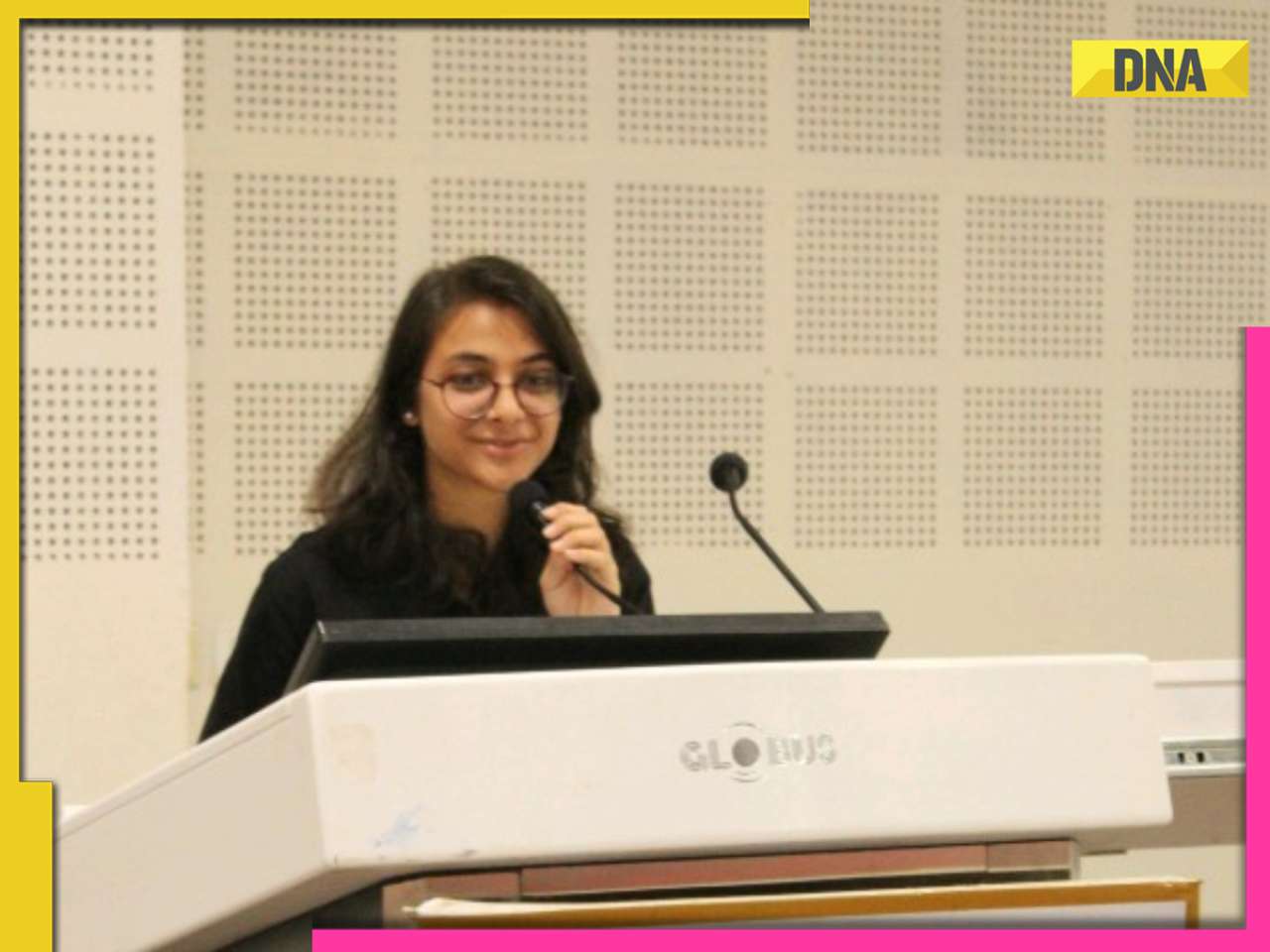AI and machine learning were underscored as pivotal in their strategy, enabling adaptive security systems and predictive analytics.
In a detailed conversation with Bhausaheb Suryabhan Nagawade, Founder and Managing Director at NikxIT Technology Pvt Ltd, a Government of India recognized Startup. The discussion centered on the nuanced balance between security and usability in software design. He highlighted the company's commitment to user-centered design, incorporating feedback to refine features such as secure communication platforms. AI and machine learning were underscored as pivotal in their strategy, enabling adaptive security systems and predictive analytics.
Given the inherent tension between security and usability in software design, how do you approach the initial stages of developing a product to ensure both aspects are adequately addressed?
At NikxIT Technology, we believe that the initial stages of product development are critical in setting the foundation for both security and usability. Our approach begins with a comprehensive risk assessment and user needs analysis. We start by understanding the specific security threats relevant to the application and identifying potential vulnerabilities. This involves collaborating with security experts to ensure that we are aware of the latest threats and mitigation strategies.
Simultaneously, we conduct thorough user research, scrum meetings to understand the needs, behaviors, and pain points of our product’s end users. This includes surveys, interviews, and usability testing sessions. By gathering this data early on, we can design security measures that are intuitive and user-friendly.
2. NikxIT Technology emphasizes the use of advanced authentication methods such as OAuth 2.0 and JSON Web Tokens. Can you share some specific examples of how these methods have been successfully implemented in your products to enhance security while maintaining user-friendliness?
We have implemented OAuth 2.0 in our enterprise solutions. OAuth 2.0 is protocol that allows a user to grant a third-party web site or application access to the user's protected resources, without necessarily revealing their long-term credentials or even their identity. It focuses on client developer simplicity while providing specific authorization flows for applications. It allows third-party services to exchange tokens on behalf of users to access their information without sharing their credentials. It supports various grant types, such as Authorization Code, Implicit, Resource Owner Password Credentials, and Client Credentials. This method adds an additional layer of security without interrupting the user’s workflow.
These advanced authentication methods have been well-received by our clients, as they strike a balance between robust security and ease of use.
3. How does NikxIT Technology engage users throughout the design process to ensure that security measures do not disrupt the user experience?
Engaging users throughout the design process is a core principle at NikxIT Technology. We employ a variety of methods to gather user feedback, including surveys, focus groups, and usability testing. This continuous engagement ensures that our products meet user needs and expectations.
The user feedback is instrumental in identifying and addressing pain points, leading to a more user-friendly and secure product. Regularly incorporating user feedback into our development cycle ensures that we create solutions that are both secure and easy to use.
4. Artificial Intelligence and Machine Learning play a significant role in your approach to balancing security and usability. Can you elaborate on how these technologies have been integrated into your products and the specific benefits they have provided?
AI and ML are integral to our strategy for balancing security and usability. These technologies enable us to develop adaptive security systems that respond dynamically to user behavior and context.
AI helps us in predictive analytics, where we analyze patterns and trends to anticipate potential security threats. By leveraging ML models trained on large datasets, we can identify emerging threats and vulnerabilities before they become critical issues. This proactive approach allows us to implement security measures preemptively, ensuring continuous protection without disrupting the user experience.
Furthermore, AI-driven user behavior analytics help us fine-tune our security protocols to be less intrusive. For instance, if a user consistently logs in from the same device and location, the system can streamline the authentication process for that user. Conversely, if there are significant deviations from the usual behavior, the system can increase security measures accordingly.
5. Looking ahead, what emerging technologies do you believe will have the most significant impact on achieving the balance between security and usability in software design?
The future of balancing security and usability lies in emerging technologies such as blockchain, decentralized identities, and zero-trust architectures. These technologies promise new ways to enhance security without compromising usability. Blockchain technology, for instance, offers decentralized and tamper-proof data storage solutions. At NikxIT Technology, we are exploring the use of blockchain for secure identity management and transaction verification. By leveraging blockchain, we can ensure data integrity and security while providing users with transparent and easy-to-use systems.
Decentralized identities represent another promising trend. This approach allows users to control their own digital identities, reducing reliance on centralized authorities. We are developing solutions that integrate decentralized identity frameworks, enabling users to manage their identities securely and conveniently.
![submenu-img]() Deepti Sadhwani Set to Light Up Dubai Fashion Week 2024
Deepti Sadhwani Set to Light Up Dubai Fashion Week 2024![submenu-img]() Meet man, who bought Queen Elizabeth II's Range Rover, not Mukesh Ambani, Gautam Adani, Ratan Tata, he is...
Meet man, who bought Queen Elizabeth II's Range Rover, not Mukesh Ambani, Gautam Adani, Ratan Tata, he is...![submenu-img]() Jaya Bachchan had 'big crush' on this superstar, it's not Amitabh Bachchan, actress said she was 'nervous' meeting him
Jaya Bachchan had 'big crush' on this superstar, it's not Amitabh Bachchan, actress said she was 'nervous' meeting him![submenu-img]() Meet man who lost 114 kg weight in just 7 months, here's how he did it
Meet man who lost 114 kg weight in just 7 months, here's how he did it![submenu-img]() IKEA’s Ingka Centres to invest Rs 5500 crore in this Indian city to open it’s second...
IKEA’s Ingka Centres to invest Rs 5500 crore in this Indian city to open it’s second...![submenu-img]() iPhone 16 लॉन्च, Apple Watch Series 10 से भी उठा पर्दा, जानें इसके रेट और फीचर्स
iPhone 16 लॉन्च, Apple Watch Series 10 से भी उठा पर्दा, जानें इसके रेट और फीचर्स![submenu-img]() Kalindi Express को उड़ाने की साजिश के प�ीछे था IS का हाथ? खुरासान मॉड्यूल पर गहराया शक
Kalindi Express को उड़ाने की साजिश के प�ीछे था IS का हाथ? खुरासान मॉड्यूल पर गहराया शक![submenu-img]() Mpox In India: भारत में एमपॉक्स के पहले केस की पुष्टि, स्वास्थ्य मंत्रालय ने कहा- यह एक अलग मामला
Mpox In India: भारत में एमपॉक्स के पहले केस की पुष्टि, स्वास्थ्य मंत्रालय ने कहा- यह एक अलग मामला![submenu-img]() UP Crime News: गोंडा में इंसानियत शर्मसार, नाबालिग के साथ चलती कार में गैंग रेप
UP Crime News: गोंडा में इंसानियत शर्मसार, नाबालिग के साथ चलती कार में गैंग रेप ![submenu-img]() GST Council की मीटिंग में बड़ा फैसला, कैंसर की दवा और नमकीन पर टैक्स घटाया
GST Council की मीटिंग में बड़ा फैसला, कैंसर की दवा और नमकीन पर टैक्स घटाया![submenu-img]() Tata Safari, rival to Hyundai Alcazar Facelift gets massive discount, save up to Rs…
Tata Safari, rival to Hyundai Alcazar Facelift gets massive discount, save up to Rs…![submenu-img]() Hyundai Alcazar facelift launched in India: Check price, design and other features
Hyundai Alcazar facelift launched in India: Check price, design and other features![submenu-img]() Jawa 42 FJ vs Royal Enfield Classic 350: Price, engine, specs compared
Jawa 42 FJ vs Royal Enfield Classic 350: Price, engine, specs compared ![submenu-img]() Bhavish Aggarwal’s Ola Electric set to challenge Mahindra, Bajaj as his company plans to launch…
Bhavish Aggarwal’s Ola Electric set to challenge Mahindra, Bajaj as his company plans to launch…![submenu-img]() Skoda-Auto Volkswagen India to invest Rs 15000 crore to set up EV plant in…
Skoda-Auto Volkswagen India to invest Rs 15000 crore to set up EV plant in…![submenu-img]() Meet man, who left Rs 2800000 salary job, then cracked UPSC exam with AIR 171, became...
Meet man, who left Rs 2800000 salary job, then cracked UPSC exam with AIR 171, became...![submenu-img]() Meet Rashi Bagga, hired for record-breaking package, had rejected Rs 14 lakh job, not from IIT, IIM…
Meet Rashi Bagga, hired for record-breaking package, had rejected Rs 14 lakh job, not from IIT, IIM…![submenu-img]() Meet man, who worked as daily wager, cracked NEET exam with AIR...
Meet man, who worked as daily wager, cracked NEET exam with AIR...![submenu-img]() SSC CGL 2024 exam begins today: Check important guidelines, other details here
SSC CGL 2024 exam begins today: Check important guidelines, other details here![submenu-img]() Meet woman who cleared UPSC exam in 1st attempt at 21, got AIR 13 without coaching, but didn’t become IAS, IPS due to...
Meet woman who cleared UPSC exam in 1st attempt at 21, got AIR 13 without coaching, but didn’t become IAS, IPS due to...![submenu-img]() Kolkata Doctor Case: TMC MP Jawhar Sircar To Resign From Rajya Sabha Over Kolkata Doctor Rape-Murder
Kolkata Doctor Case: TMC MP Jawhar Sircar To Resign From Rajya Sabha Over Kolkata Doctor Rape-Murder![submenu-img]() Mumbai: Fire Breaks Out At Times Tower In Mumbai, 9 Fire Units Deployed
Mumbai: Fire Breaks Out At Times Tower In Mumbai, 9 Fire Units Deployed![submenu-img]() 'Dharavi Project Is About Restoring Dignity...', Says Gautam Adani | Dharavi Redevelopment Project
'Dharavi Project Is About Restoring Dignity...', Says Gautam Adani | Dharavi Redevelopment Project![submenu-img]() Kolkata Doctor Case: CBI Visits RG Kar, Seizes Documents On Funds Used During Sandip Ghosh’s Tenure
Kolkata Doctor Case: CBI Visits RG Kar, Seizes Documents On Funds Used During Sandip Ghosh’s Tenure![submenu-img]() Giriraj Singh Attacked: Union Minister Giriraj Singh Assaulted In Begusarai, Bihar; Accused Arrested
Giriraj Singh Attacked: Union Minister Giriraj Singh Assaulted In Begusarai, Bihar; Accused Arrested![submenu-img]() Meet man, who bought Queen Elizabeth II's Range Rover, not Mukesh Ambani, Gautam Adani, Ratan Tata, he is...
Meet man, who bought Queen Elizabeth II's Range Rover, not Mukesh Ambani, Gautam Adani, Ratan Tata, he is...![submenu-img]() IKEA’s Ingka Centres to invest Rs 5500 crore in this Indian city to open it’s second...
IKEA’s Ingka Centres to invest Rs 5500 crore in this Indian city to open it’s second...![submenu-img]() GST rates on cancer drugs cut by 7%, decision on health insurance...
GST rates on cancer drugs cut by 7%, decision on health insurance...![submenu-img]() Meet world’s richest prisoner, who has net worth of Rs 360969 crore, he is….
Meet world’s richest prisoner, who has net worth of Rs 360969 crore, he is….![submenu-img]() Tata Safari, rival to Hyundai Alcazar Facelift gets massive discount, save up to Rs…
Tata Safari, rival to Hyundai Alcazar Facelift gets massive discount, save up to Rs…![submenu-img]() Made in Rs 63 crore, this film was called next Gadar, superstar wrote movie 20 years ago, it became major flop, earned..
Made in Rs 63 crore, this film was called next Gadar, superstar wrote movie 20 years ago, it became major flop, earned..![submenu-img]() This actress worked as telephone operator, became Bollywood superstar despite not knowing Hindi; her film was banned...
This actress worked as telephone operator, became Bollywood superstar despite not knowing Hindi; her film was banned...![submenu-img]() 7 countries with most UNESCO World Heritage sites; check how many India has
7 countries with most UNESCO World Heritage sites; check how many India has![submenu-img]() Top five anti-ageing skincare secrets by Nita Ambani
Top five anti-ageing skincare secrets by Nita Ambani![submenu-img]() India's longest-running TV show has been on air for 57 years, has 16000 episodes; not KBC, CID, Taarak Mehta, Bigg Boss
India's longest-running TV show has been on air for 57 years, has 16000 episodes; not KBC, CID, Taarak Mehta, Bigg Boss![submenu-img]() Deepti Sadhwani Set to Light Up Dubai Fashion Week 2024
Deepti Sadhwani Set to Light Up Dubai Fashion Week 2024![submenu-img]() SK Fortune Group is Changing Pune’s Skyline with new high-rise buildings
SK Fortune Group is Changing Pune’s Skyline with new high-rise buildings![submenu-img]() Delhi court sends AAP MLA Amanatullah Khan to 14-day judicial custody in...
Delhi court sends AAP MLA Amanatullah Khan to 14-day judicial custody in...![submenu-img]() First case of Mpox confirmed in India, patient put under isolation
First case of Mpox confirmed in India, patient put under isolation![submenu-img]() Rameshwaram Cafe blast: NIA files chargesheet against four accused
Rameshwaram Cafe blast: NIA files chargesheet against four accused










































)
)
)
)
)
)
)
)
)
)
)
)
)
)
)





)
)
)
)
)
)